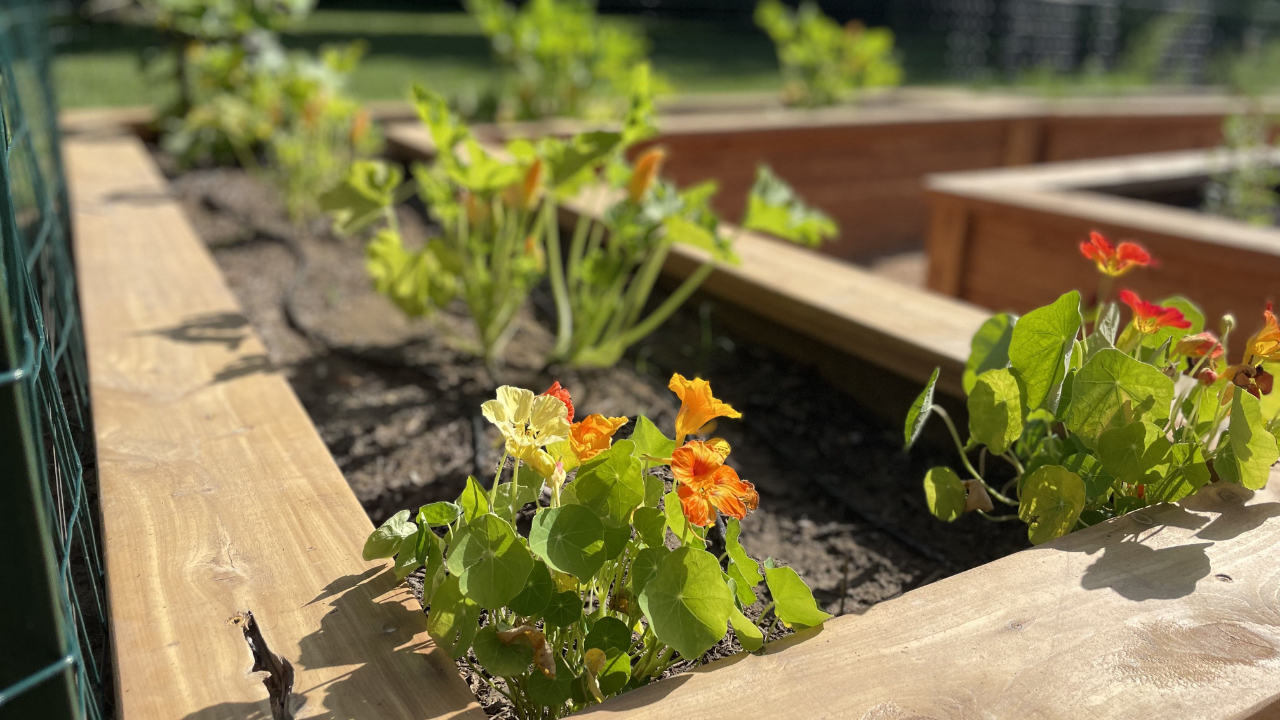How Much Water Do Vegetable Gardens Need?
We are so grateful to have gotten some measurable rainfall in Louisville, KY this week! There truly is no substitute for good old fashion rain in the home garden.
It’s been a HOT summer with temperatures in the 90's and heat indexes in the 100's. Thank goodness for irrigation systems, city water, and of course RAIN water.
Fruits, vegetables, and herbs are heavy drinkers, ha, and need consistent watering. If not, they can develop a myriad of problems.
Inconsistent watering in a food garden can lead to: Blossom End Rot on tomatoes and peppers; plants drying out and burning up entirely; stunted growth and development; and unworkable soil - to name a few.
Here is a good metrics on water requirements for edible plants:
Most food crops need one inch of water per week in 60 degree Fahrenheit weather.
For every 10 degree rise in temperature your plants will need an additional 1/2” of water.
In the 70’s you’ll need 1 1/2” of water.
In the 80’s they need 2” of water.
In the 90’s th...
From Soil to Sustainability

Image via Pexels
From Soil to Sustainability: A Practical Guide to Starting and Monetizing a Small Farm
If you’ve been craving a life tethered to the land, where your hands work in rhythm with the seasons and your profits grow from the earth, launching a small farm might be your calling. But make no mistake—farming is a business just as much as it is a lifestyle. That means you’ll need to make smart decisions from the very beginning to create something that can thrive both agriculturally and financially. Whether you dream of lush rows of vegetables, pasture-raised animals, or something more unconventional like agritourism or alternative energy partnerships, there’s a path forward. What matters is planning with intention and acting with clarity.
Choosing the Right Land
Before you buy a single seed or tractor, you’ll need to secure land that actually supports your farming goals. Soil quality is critical, and so is water access—two things that aren’t always obvious in a real estate li...
How to Germinate Seeds Indoors for Spring Success
It can feel like forever waiting for seeds to sprout once we've planted them. If you're feeling anxious - don't worry, it is still very early in the Kentucky growing season. Soil temperatures outdoors are not staying warm enough for long enough to properly germinate vegetable seeds outdoors. The question is, how can you germinate seeds now to get a jump start on the growing season?
Hiring a professional garden coach makes it easy as they always have helpful tips on seed germination in a jiffy! But for you DIY'ers... here are the dirty deets:
#1. Seed Selection
You may start *most* lettuces, brassicas, and some herbs indoors now. EX: salad greens, cooking greens, broccoli, cauliflower, cabbage, kohlrabi, (wait on brussels sprouts), fennel, celery, green onions, dill, cilantro, calendula, nasturtium, etc.
It is not advised to start root vegetables indoors or very fast growing plants. EX: Carrots, beets, turnips, radish, parsnips, rutabaga, potato, snow peas, snap peas. Having to tra...
Planting Plans for Beginners

I love your ambition. You are a go-getter! But just because the Derby horses are running in Kentucky doesn't mean you have to rush to plant your home garden.
A common mistake beginning gardeners make is planting without planning. This isn't you, is it?
You know how much space you have, you bought a ton of seeds and plants, and now the weather is right but, what now?
Here are some helpful tips on creating a Planting Plans:
First, get an idea as to how much space your plants need, especially if your garden area is small. If you have unlimited space you may place your plants further apart and add in more aisle space.
Grab some graph paper, create a veggie key, and sketch out your bed dimensions. Start penciling in your plant selections by size.
Here is a good rule of thumb...
Nine to 16 small-sized plants like radish, carrots, and lettuces can be packed into a square foot.
Four to six medium-sized plants like garlic, Swiss chard, beets, and cilantro can fit into a square foot.
...Home gardening creates resiliency among supply chain


